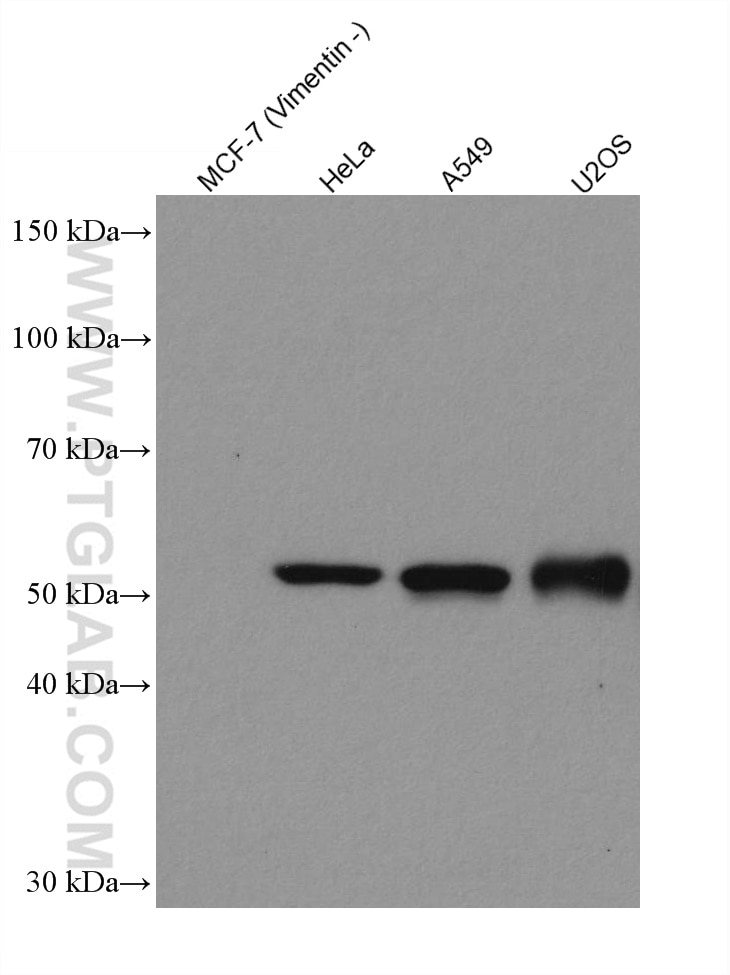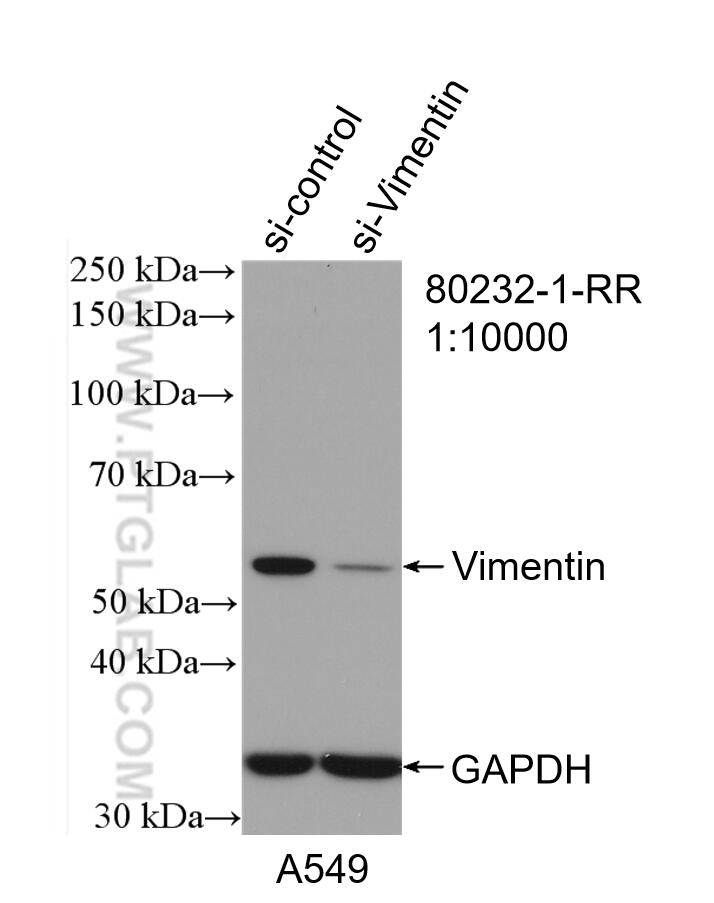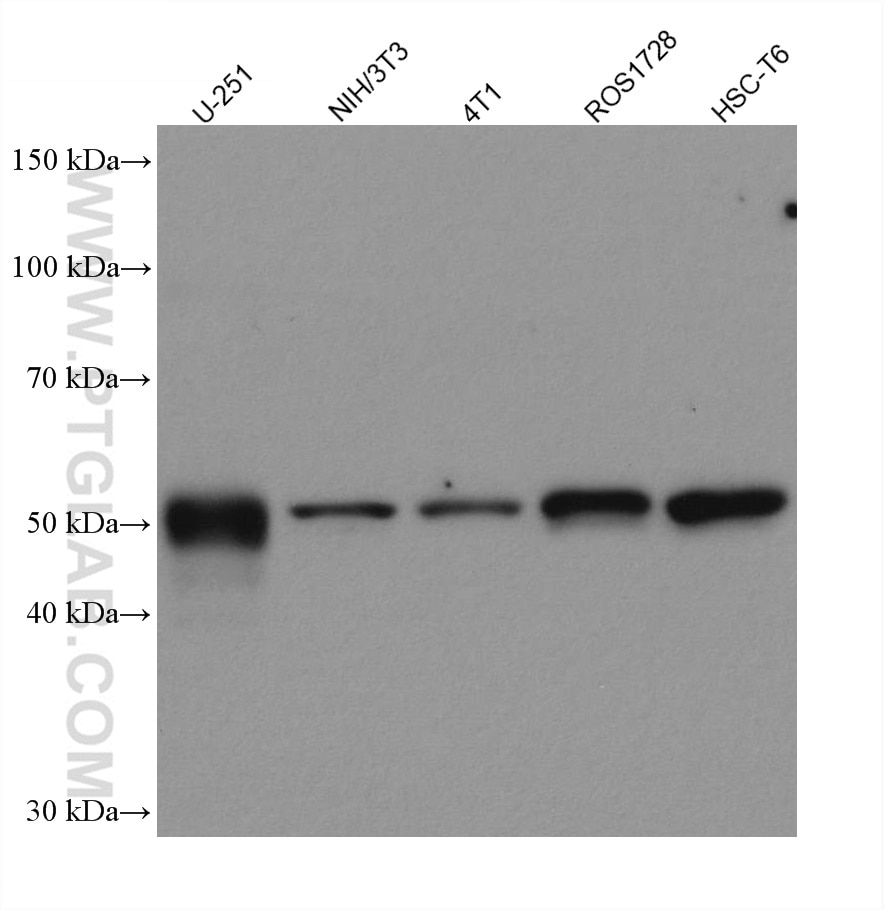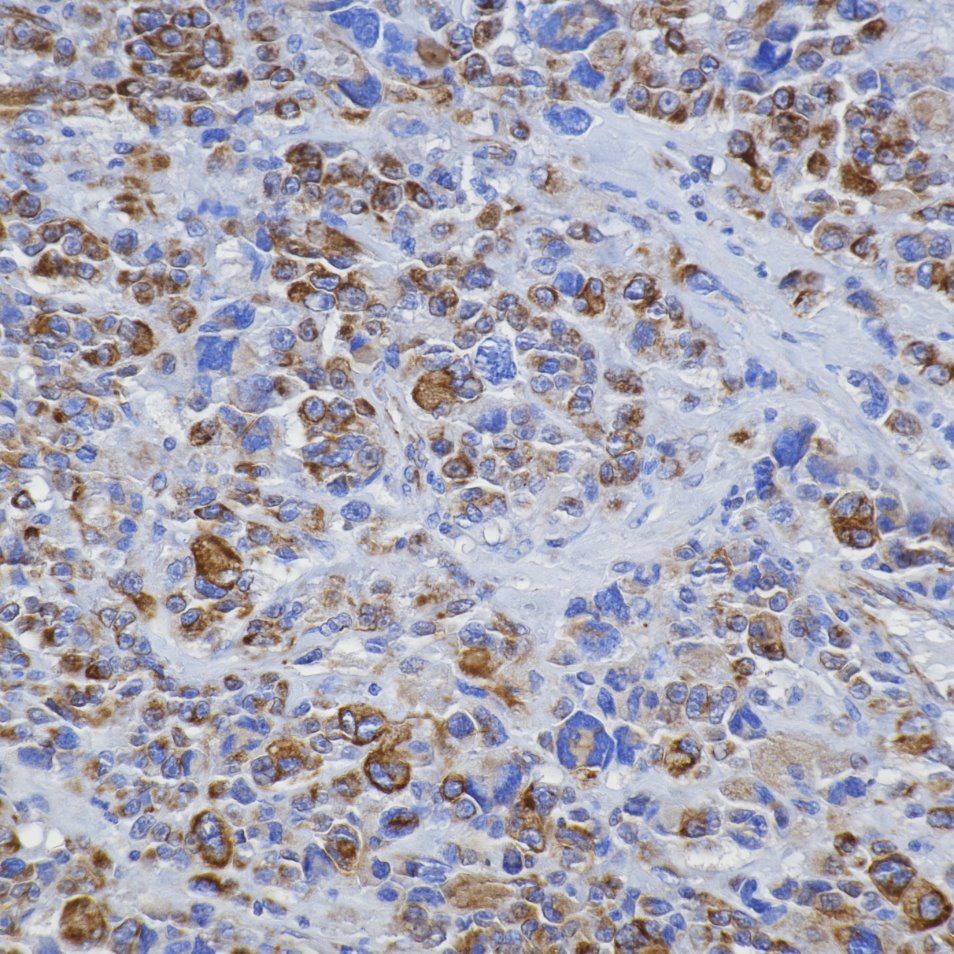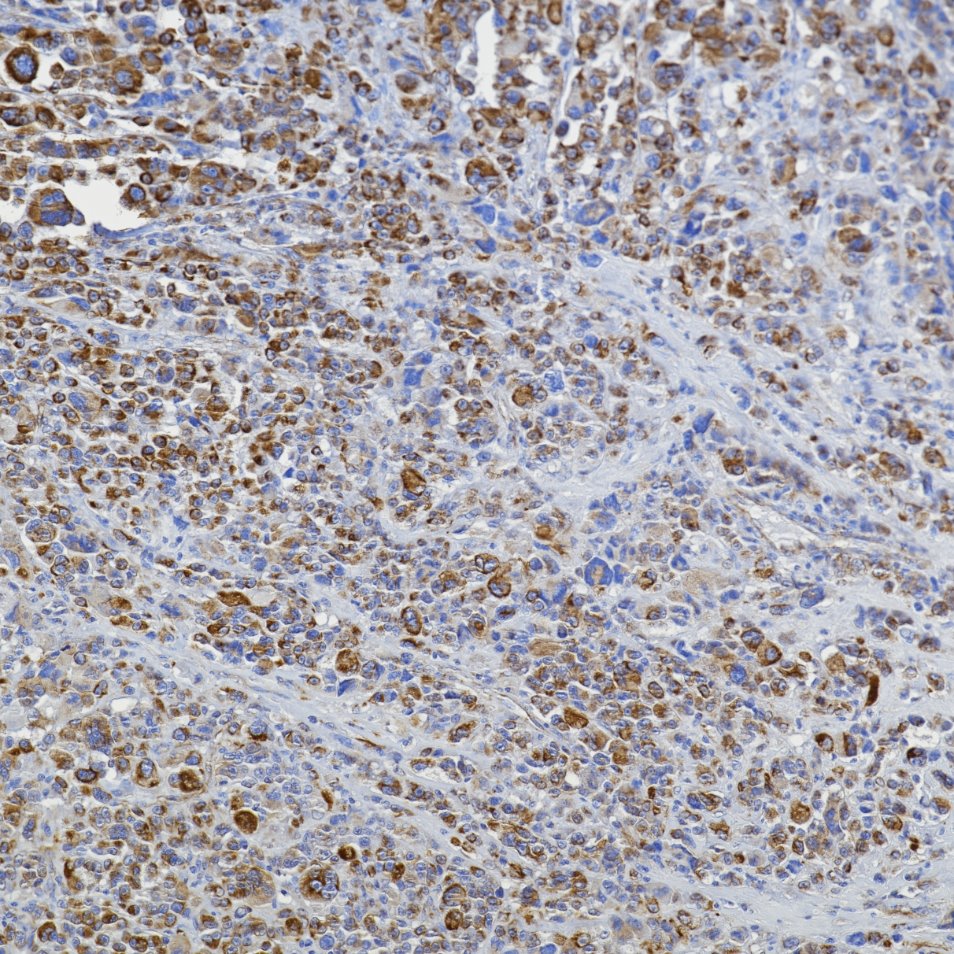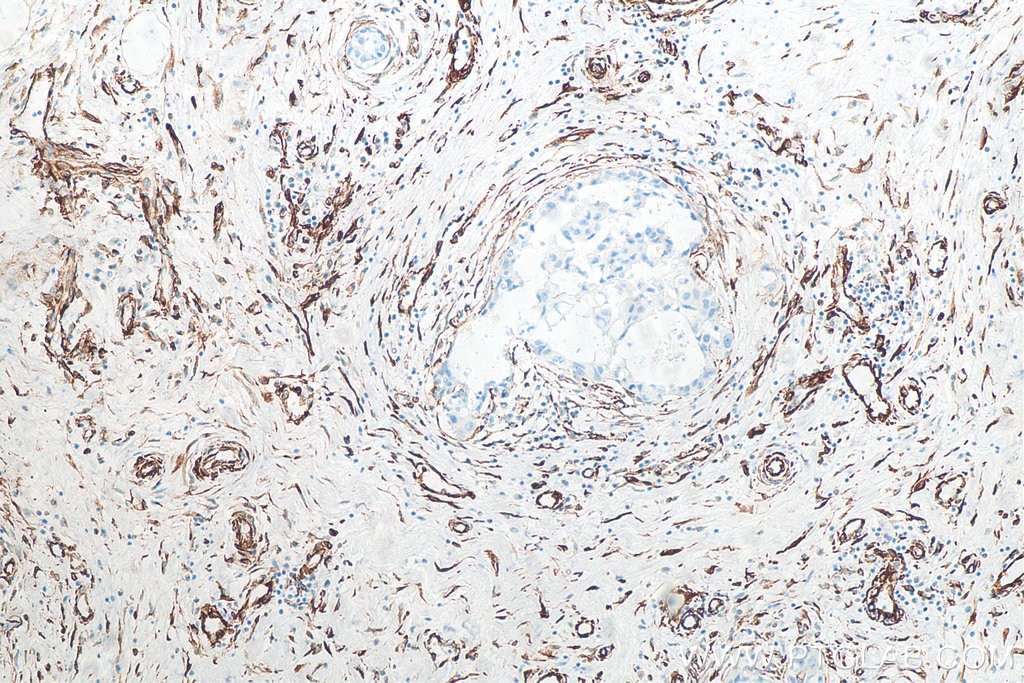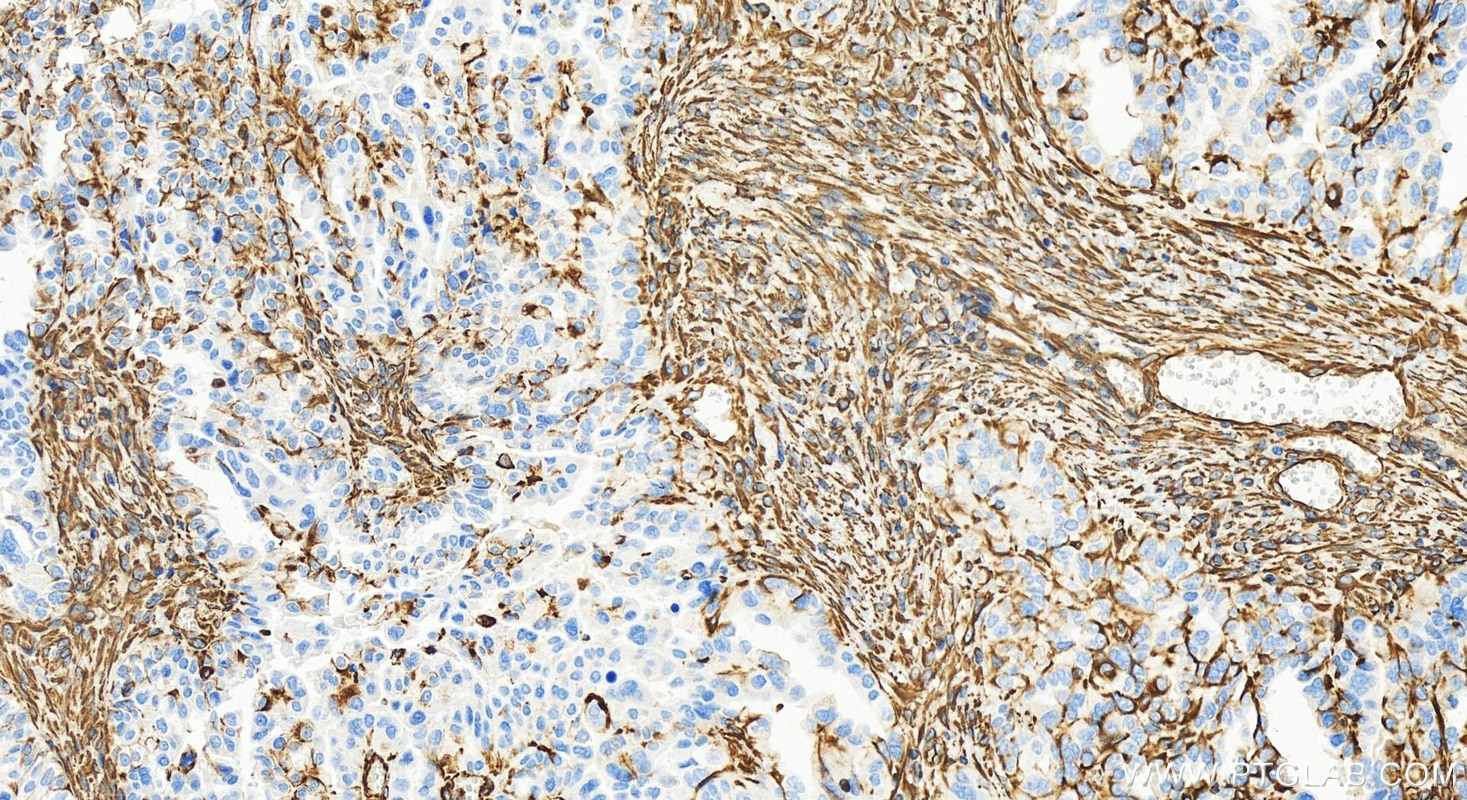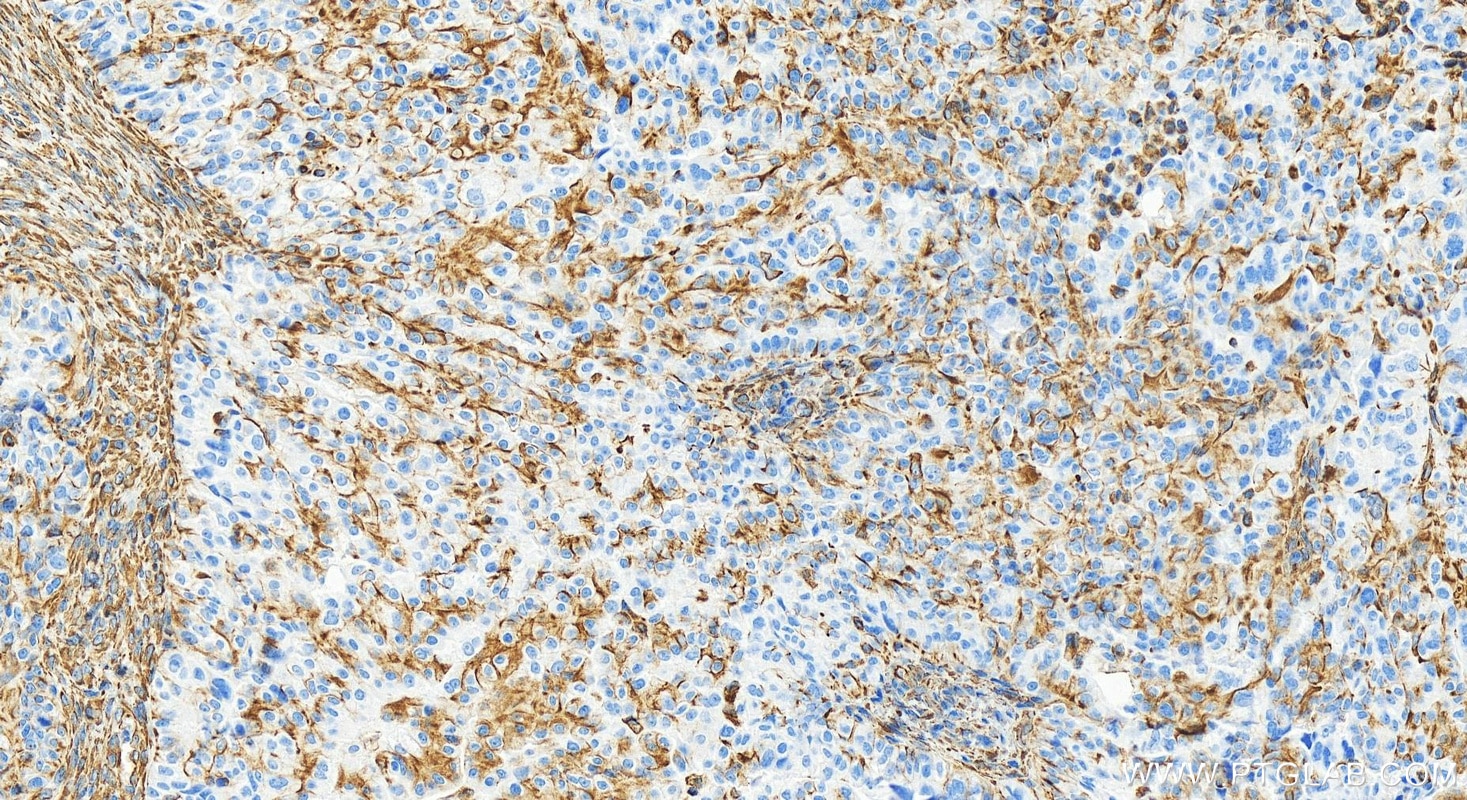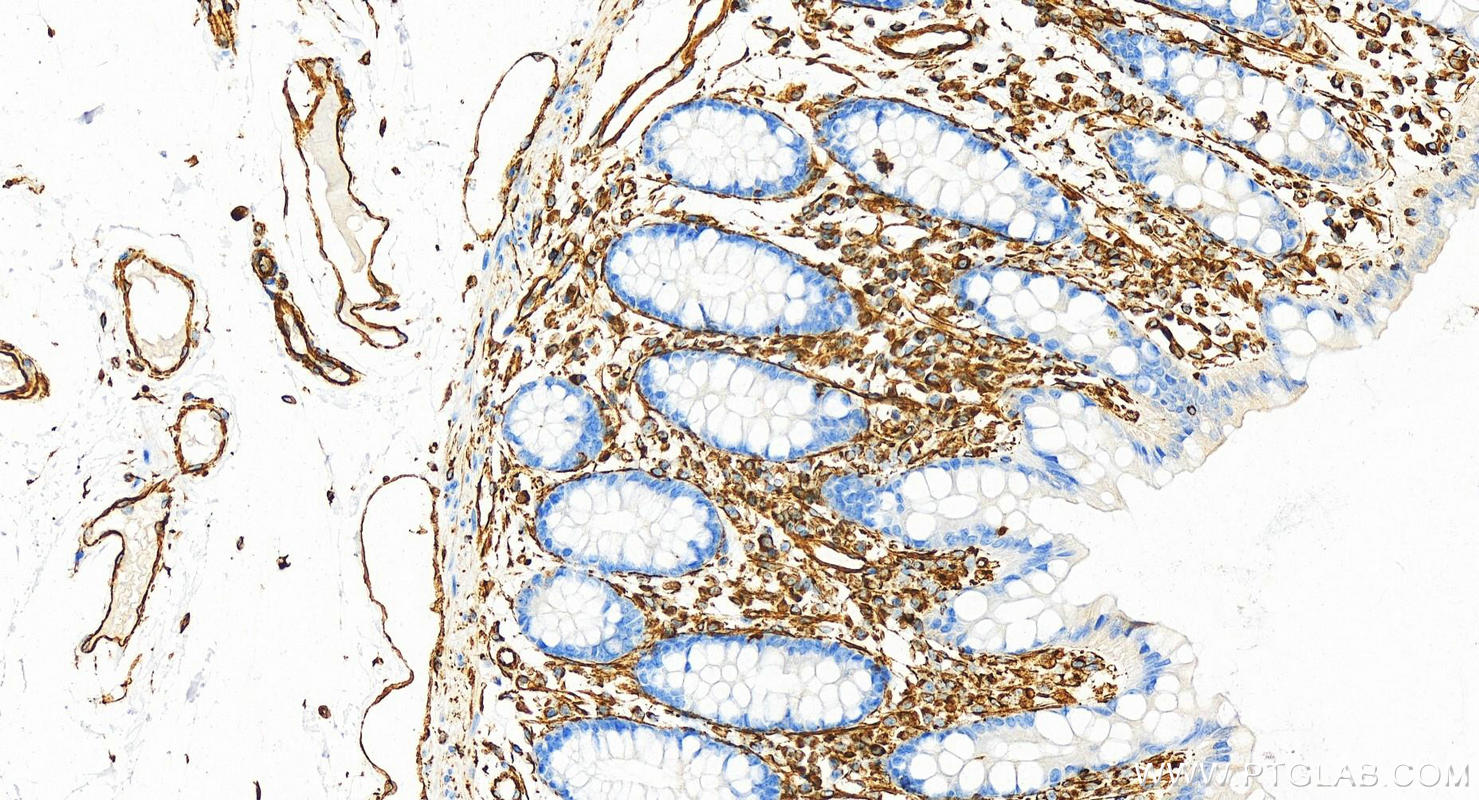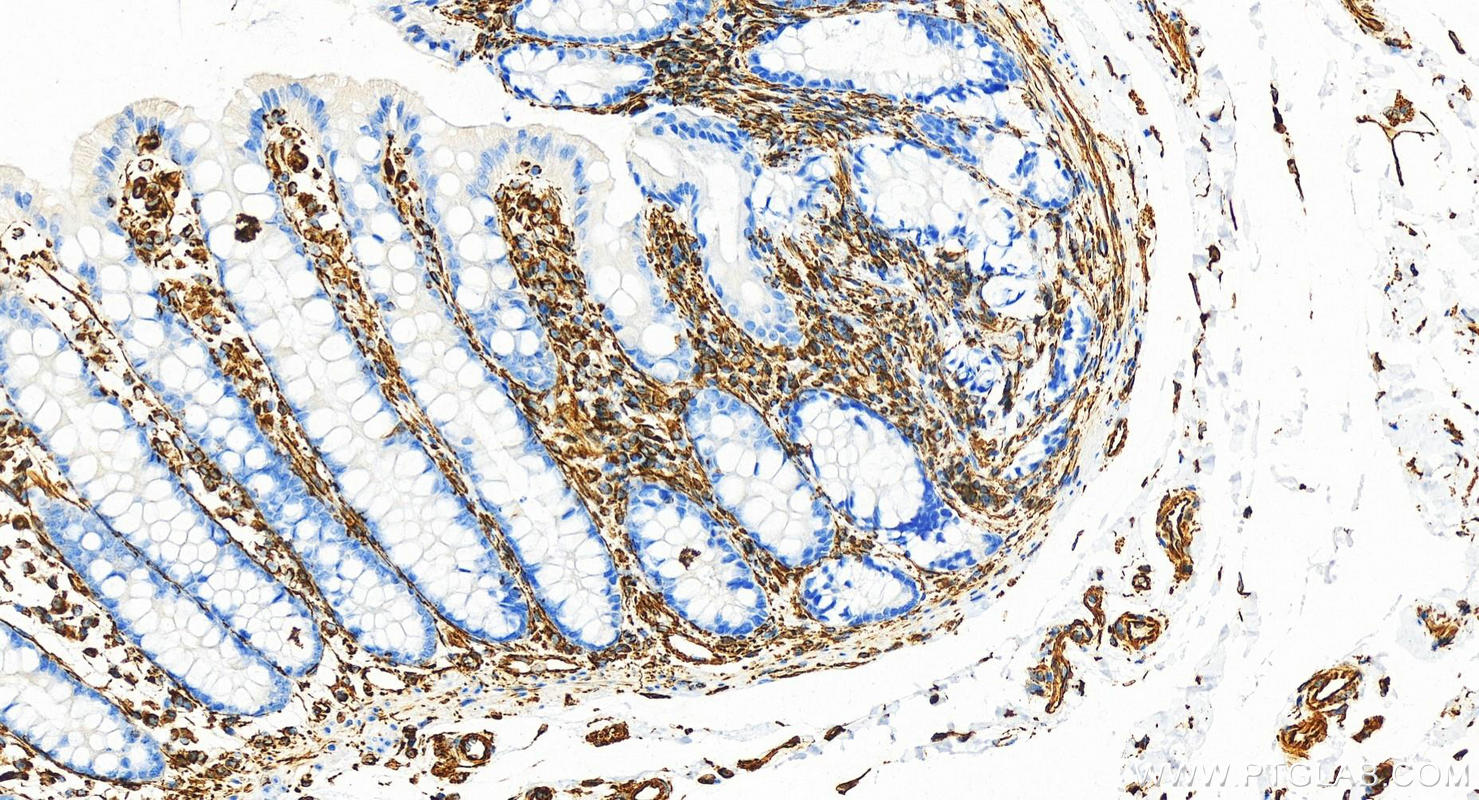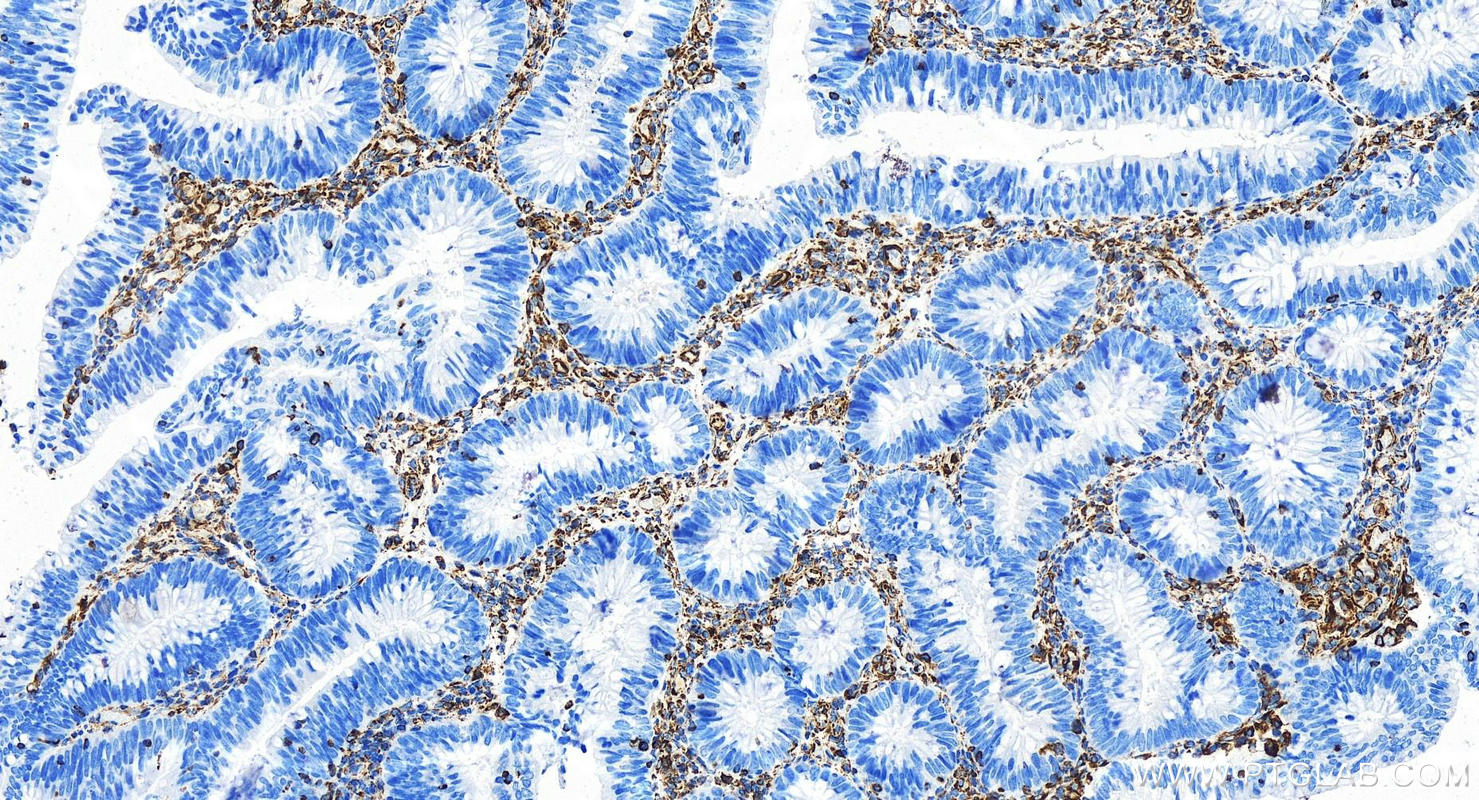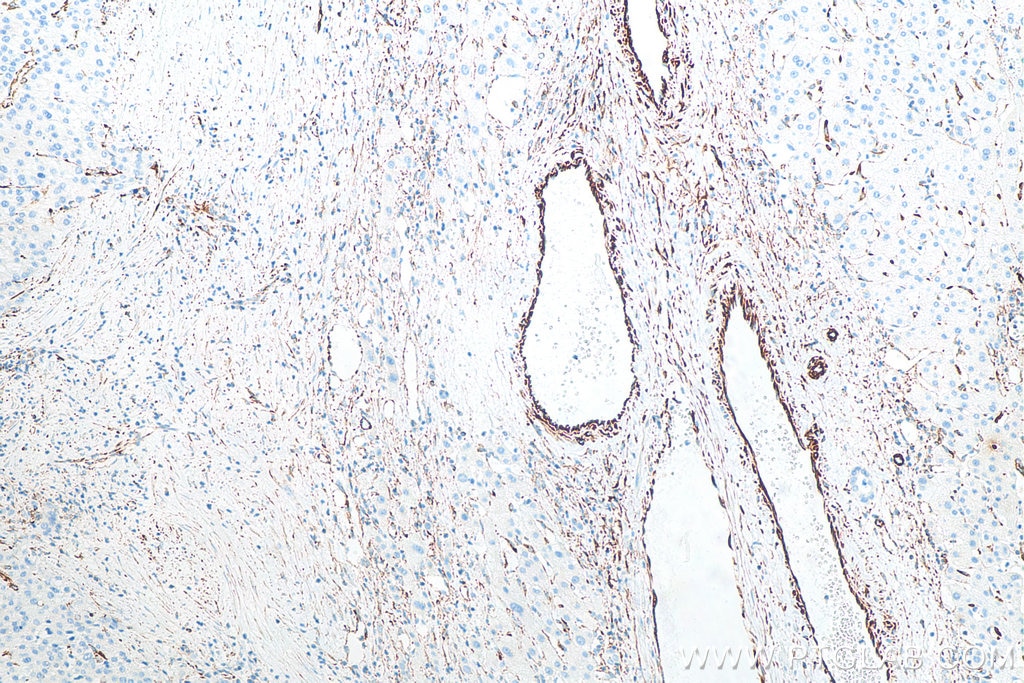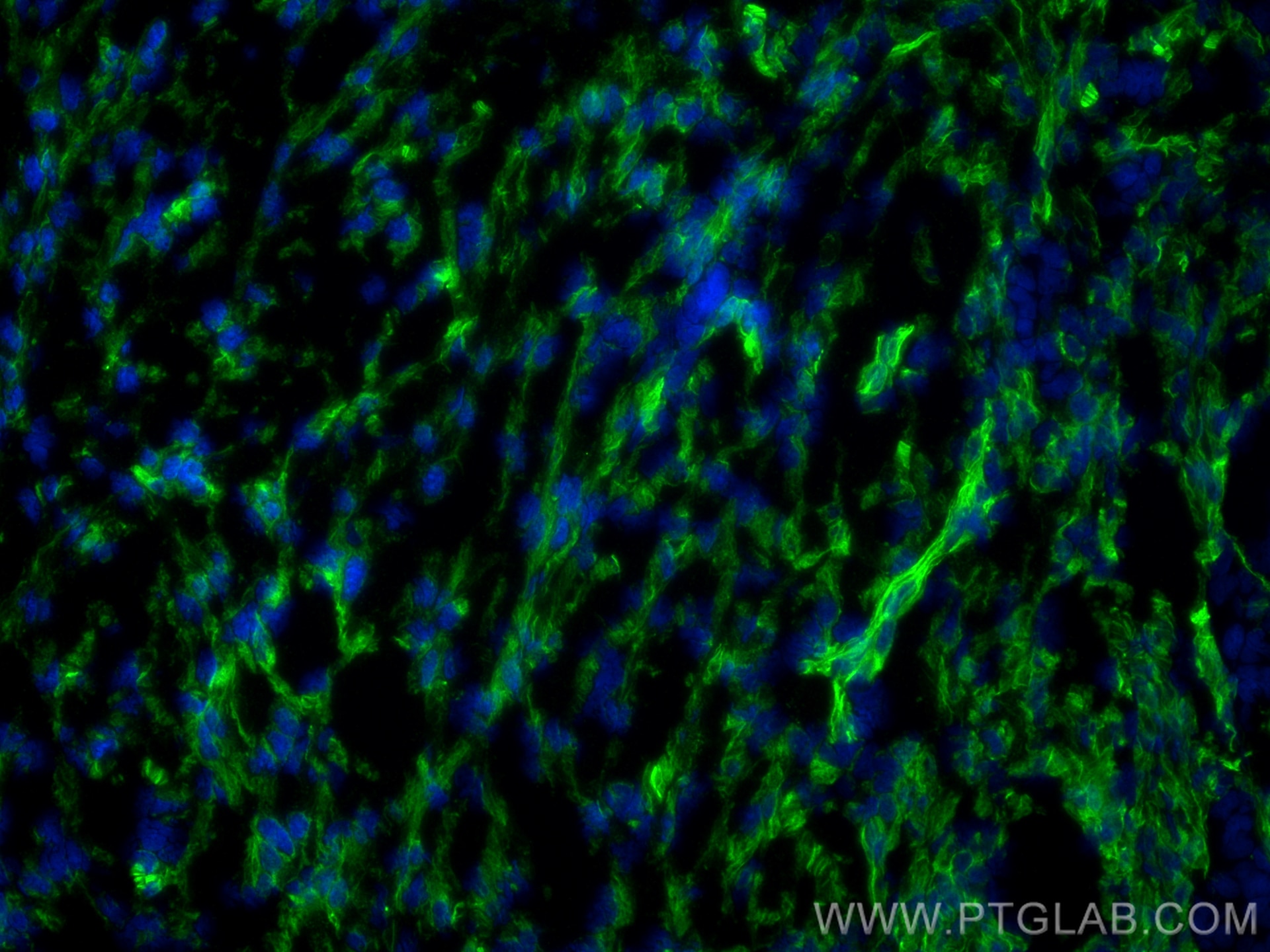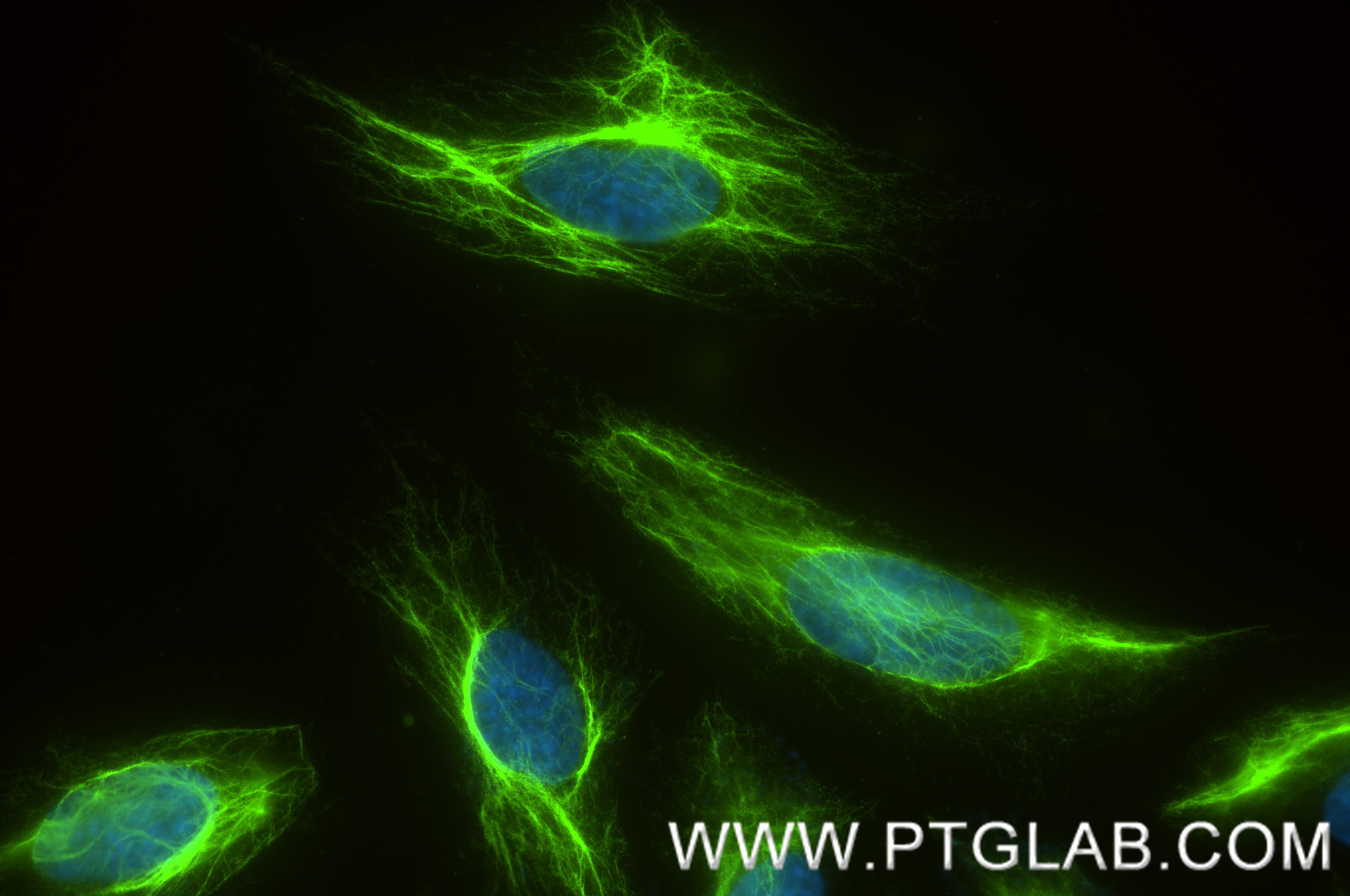Validation Data Gallery
Tested Applications
| Positive WB detected in | MCF-7 cells, U-251 cells, A549 cells, HeLa cells, U2OS cells, NIH/3T3 cells, 4T1 cells, ROS1728 cells, HSC-T6 cells |
| Positive IHC-Autostainer detected in | human melanoma tissue |
| Positive IHC detected in | human breast cancer tissue, human liver cancer tissue, human colon tissue, human colon cancer tissue, human ovary cancer tissue, human melanoma tissue Note: suggested antigen retrieval with TE buffer pH 9.0; (*) Alternatively, antigen retrieval may be performed with citrate buffer pH 6.0 |
| Positive IF-Fro detected in | mouse breast cancer |
| Positive IF/ICC detected in | HeLa cells |
Recommended dilution
| Application | Dilution |
|---|---|
| Western Blot (WB) | WB : 1:20000-1:100000 |
| Immunohistochemistry (IHC)-AUTOSTAINER | IHC-AUTOSTAINER : 1:250-1:1000 |
| Immunohistochemistry (IHC) | IHC : 1:1250-1:5000 |
| Immunofluorescence (IF)-FRO | IF-FRO : 1:200-1:800 |
| Immunofluorescence (IF)/ICC | IF/ICC : 1:200-1:800 |
| It is recommended that this reagent should be titrated in each testing system to obtain optimal results. | |
| Sample-dependent, Check data in validation data gallery. | |
Published Applications
| WB | See 6 publications below |
| IF | See 1 publications below |
Product Information
80232-1-RR targets Vimentin in WB, IHC, IHC-Autostainer, IF/ICC, IF-Fro, ELISA applications and shows reactivity with human, mouse, rat samples.
| Tested Reactivity | human, mouse, rat |
| Cited Reactivity | human |
| Host / Isotype | Rabbit / IgG |
| Class | Recombinant |
| Type | Antibody |
| Immunogen |
CatNo: Ag0489 Product name: Recombinant human Vimentin protein Source: e coli.-derived, PGEX-4T Tag: GST Domain: 1-466 aa of BC000163 Sequence: MSTRSVSSSSYRRMFGGPGTASRPSSSRSYVTTSTRTYSLGSALRPSTSRSLYASSPGGVYATRSSAVRLRSSVPGVRLLQDSVDFSLADAINTEFKNTRTNEKVELQELNDRFANYIDKVRFLEQQNKILLAELEQLKGQGKSRLGDLYEEEMRELRRQVDQLTNDKARVEVERDNLAEDIMRLREKLQEEMLQREEAENTLQSFRQDVDNASLARLDLERKVESLQEEIAFLKKLHEEEIQELQAQIQEQHVQIDVDVSKPDLTAALRDVRQQYESVAAKNLQEAEEWYKSKFADLSEAANRNNDALRQAKQESTEYRRQVQSLTCEVDALKGTNESLERQMREMEENFAVEAANYQDTIGRLQDEIQNMKEEMARHLREYQDLLNVKMALDIEIATYRKLLEGEESRISLPLPNFSSLNLRETNLDSLPLVDTHSKRTLLIKTVETRDGQVINETSQHHDDLE 相同性解析による交差性が予測される生物種 |
| Full Name | vimentin |
| Calculated molecular weight | 466 aa, 54 kDa |
| Observed molecular weight | 50-55 kDa |
| GenBank accession number | BC000163 |
| Gene Symbol | VIM |
| Gene ID (NCBI) | 7431 |
| ENSEMBL Gene ID | ENSG00000026025 |
| RRID | AB_2918879 |
| Conjugate | Unconjugated |
| Form | |
| Form | Liquid |
| Purification Method | Protein A purification |
| UNIPROT ID | P08670 |
| Storage Buffer | PBS with 0.02% sodium azide and 50% glycerol{{ptg:BufferTemp}}7.3 |
| Storage Conditions | Store at -20°C. Stable for one year after shipment. Aliquoting is unnecessary for -20oC storage. |
Background Information
Vimentin, also named as VIM, belongs to the intermediate filament family. Vimentin is class-III intermediate filaments found in various non-epithelial cells, especially mesenchymal cells. Vimentin is important for stabilizing the architecture of the cytoplasm. Monocyte-derived macrophages secrete vimentin into the extracellular space in vitro. Secretion of vimentin was enhanced by the proinflammatory cytokine tumor necrosis factor-alpha (TNFA; 191160) and inhibited by the antiinflammatory cytokine IL10 (124092), suggesting that vimentin is involved in the immune response. Vimentin has specialized functions that contribute to specific dynamic cellular processes. As a phosphoprotein, 55-60 kDa of vimentin proteins can be observed due to the different phosphorylation level. Isoforms of vimentin (49 kDa and 60 kDa) had also been reported. (PMID: 8640945, 22728585).
Protocols
| Product Specific Protocols | |
|---|---|
| IF protocol for Vimentin antibody 80232-1-RR | Download protocol |
| IHC protocol for Vimentin antibody 80232-1-RR | Download protocol |
| WB protocol for Vimentin antibody 80232-1-RR | Download protocol |
| Standard Protocols | |
|---|---|
| Click here to view our Standard Protocols |
Publications
| Species | Application | Title |
|---|---|---|
BMC Cancer Comprehensive analysis of scRNA-seq and bulk RNA-seq data via machine learning and bioinformatics reveals the role of lysine metabolism-related genes in gastric carcinogenesis | ||
J Exp Clin Cancer Res A novel polypeptide encoded by circSPIRE1 promotes prostate cancer proliferation and migration by restraining the ubiquitin-dependent degradation of LRP5 | ||
Front Immunol The miR-941/FOXN4/TGF-β feedback loop induces N2 polarization of neutrophils and enhances tumor progression of lung adenocarcinoma | ||
J Neurooncol The effects of BMP2 and the mechanisms involved in the invasion and angiogenesis of IDH1 mutant glioma cells | ||
Discov Oncol RRP9 promotes prostate cancer metastasis and epithelial-mesenchymal transition through activation of the AKT/GSK3β/β-Catenin signaling pathway | ||
Mol Cancer Res Ubiquitin ligase TRIM22 inhibits ovarian cancer malignancy via TCF4 degradation |

